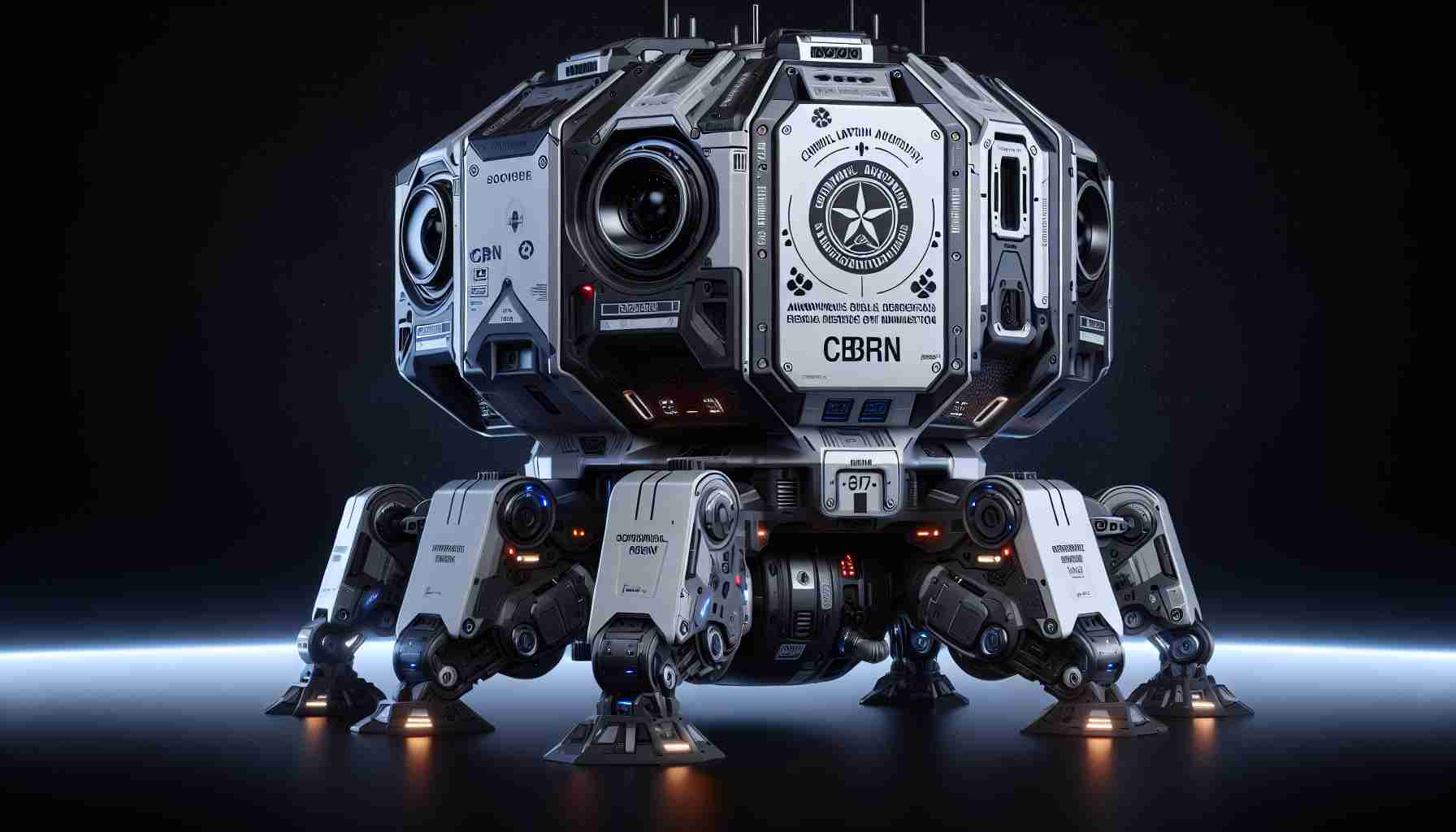The US Space Force has taken a significant step by incorporating CHAPPIE, an advanced quadruped robot specifically engineered for operations related to Chemical, Biological, Radiological, and Nuclear (CBRN) threats. This sophisticated robot is equipped with state-of-the-art sensors and can utilize the existing array of CBRN detection tools currently employed by the agency.
CHAPPIE’s capabilities extend beyond mere functionality; it embodies a culture of innovation within the military. This robot is not just a practical solution for enhancing safety and effectiveness in CBRN scenarios; it also signifies a broader promise of modernization and adaptability in military operations.
With CHAPPIE, every mission at any Air and Space Force base will benefit from enhanced operational support. It illustrates a commitment to harnessing cutting-edge technology, facilitating improved collaboration between military personnel of various ranks and industry innovators.
Master Sgt. Dominic Garcia noted that this initiative exemplifies how technological advancements can be rapidly integrated into the field, ensuring that solutions meet the immediate needs of warfighters. Such initiatives highlight the importance of equipping military forces with the necessary tools to respond efficiently to contemporary challenges in defense and security.
As CHAPPIE begins its operations, it stands as a testament to the evolving landscape of the US Space Force’s approach to modern warfare and operational readiness.
Innovative Military Technology: Tips and Facts for Understanding CHAPPIE
As the US Space Force embraces advanced technologies like the quadruped robot CHAPPIE for CBRN operations, there are several interesting facts, tips, and life hacks that can enhance our understanding of this innovation and its implications for the future of military operations.
1. Understanding the Technology
CHAPPIE is equipped with highly advanced sensors designed to detect chemical, biological, radiological, and nuclear threats. By employing a combination of artificial intelligence and real-time data analysis, this robot significantly reduces the risks faced by human operators in hazardous environments.
Life Hack: Familiarize yourself with the basics of robotics and artificial intelligence. Online courses and tutorials are readily available for those who want to dive deeper into these fields. Platforms like Coursera and Udacity offer excellent resources.
2. Collaboration Between Military and Technology Industries
The integration of CHAPPIE into military operations highlights the growing synergy between defense and the technology sector. This collaboration leads to rapid innovation and the deployment of new tools tailored to specific military needs.
Tip: Stay updated on defense technology news by following reputable websites and blogs. Subscribing to newsletters from organizations like Defense.gov or Army Times can provide you with the latest insights.
3. Importance of Modernization in the Military
The incorporation of CHAPPIE reflects a broader trend of modernization within the military. Investing in advanced technologies not only enhances operational effectiveness but also ensures that military personnel are equipped to handle contemporary threats.
Interesting Fact: The use of robots and advanced technology in military operations dates back several decades, with robots first being used for bomb disposal in the 1970s. Today, robots like CHAPPIE represent the next step in this evolution, capable of operating in complex environments.
4. Preparing for a Future with Advanced Robotics
As robotic technologies continue to evolve, understanding their capabilities and limitations will become increasingly important. This knowledge can inform discussions about ethics, security, and the future role of technology in warfare.
Tip: Engage in discussions about military technologies with peers or on platforms like Reddit. Engaging with communities that focus on military innovations can provide valuable insights and foster better understanding.
5. The Human Element in Technology Deployment
While robots like CHAPPIE enhance safety and operational efficiency, the human element remains crucial. Training military personnel to effectively collaborate with robotic systems is essential to mastering their capabilities.
Hack: Explore simulation tools and virtual reality experiences that allow users to interact with robotic systems in realistic scenarios. Several military programs are now focusing on such training methods to improve readiness.
In conclusion, the rise of robotic technologies like CHAPPIE within the US Space Force opens up a world of possibilities for military operations. By staying informed and engaged, individuals can appreciate the profound impacts these innovations have not only on defense but on society as a whole. For more insights into military technologies, check out Military.com for the latest articles and analysis.

